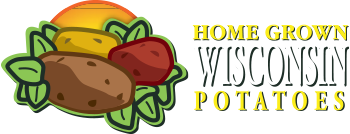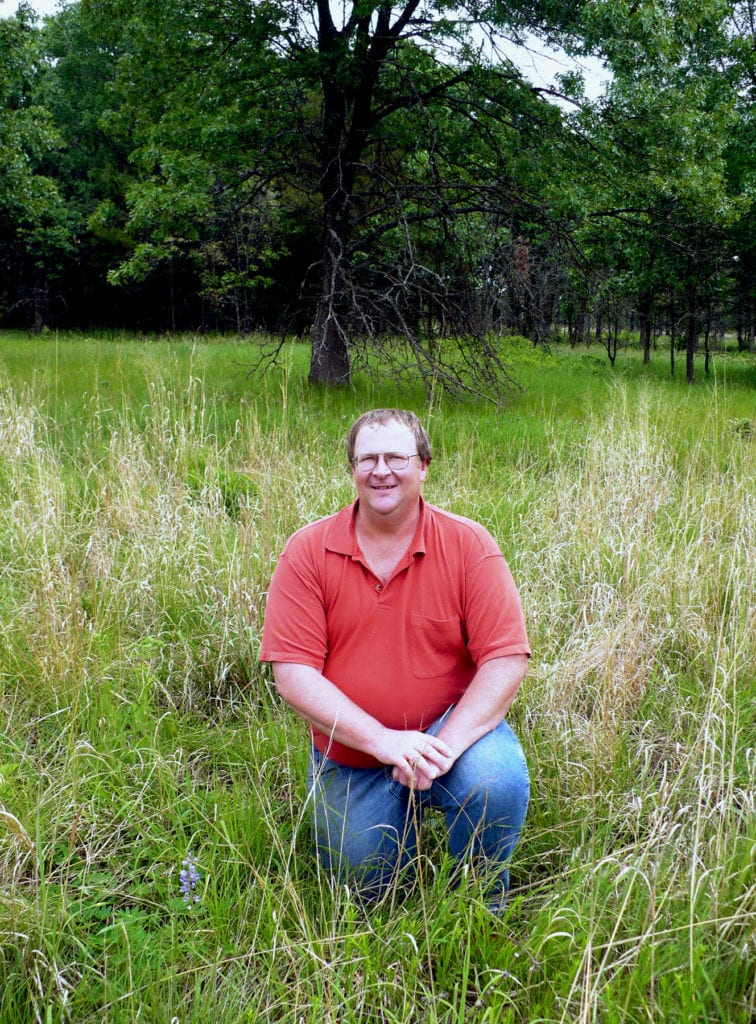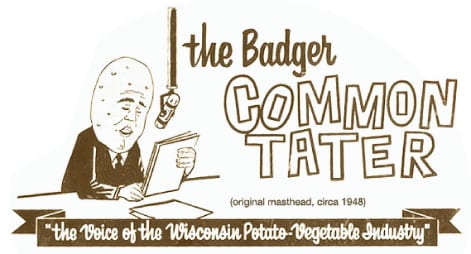
The perfect spokesperson for discussing alternate crops, Andy Wallendal, President of Wallendal Supply, Inc., a large, second generation vegetable farm in Grand Marsh, WI, has grown an astounding range of vegetables and other crops such as snap beans, sweet corn, peas, red kidney beans, alfalfa, food-grade soybeans for seed, potatoes, lima beans and cabbage over the years.
Wallendal Supply Inc. has not grown potatoes for several years, yet Wallendal was recently elected President of the Wisconsin Potato & Vegetable Growers Association (WPVGA), which is a testimony to his farming practices and service to the agriculture industry.
Other than food-grade soybeans, Wallendal’s crops are primarily raised for processors’ contracts and wind up as canned, frozen products.
According to Wallendal, “Contract specifications for processed foods usually require high quality; standard sizes; uniformity of taste, appearance and nutritive values. Stepped plantings of a number of varieties with varying maturity dates ensure a constant supply of raw material so the processing plant can operate with an even flow of input over a long period.”

As a second-generation grower, what did you learn from your father that helped you in your operation today and what are some of the things you do differently that you believe contributed to your operation’s success today?
My father, Pete Wallendal, discovered the importance of sandy and loamy soils for vegetable production and could not have chosen a better place to grow vegetables than the Central Sands region.
I grew up in our farming operation where my father taught me the importance of a sound fertility program to maintain productivity. Producing abundant harvests hinges on soil nutrients available immediately as well as throughout the growing process.
Along the way, I began to more fully understand the factors affecting the rate of nutrient release such as microbial action and soil temperature, moisture and aeration as well as how to control soil fertility.
Most importantly, I learned the importance of carefully planned planting operations and preparation of the seedbed, a key element for grain crops and doubly important for vegetables.
A strong believer in soil management and conservation, he passed this knowledge onto me. Our operation controls soil erosion and drainage, maintains organic matter balance and practices crop rotation and clean culture methods, which is why we have won various environmental excellence and stewardship awards.
Our practices changed over the years to include methods like strip or conservation tillage. We grew to understand particular cross genetics and matching those with our field characteristic to enhance the benefits for disease resistance, water retention, fertility and other desirable traits.
Our operation had 2,000 acres when I started working in it and now it has 3100. With the exception of potatoes, we still plant pretty much the same combination of crops as we did when my father was alive.
This year, we even returned to growing red kidney beans for Chippewa Valley Bean Co., Inc. because our two companies have a long history together, back to the time when my father, Pete, and Russell Doane, the founders of their respective companies, were best friends and shared ideals of ‘quality-first’ and sustainability orientation.
As far as technology goes, the first tractor my father ever bought new was a JD 4020, which is still on the farm, running strong.
Later, we operated both John Deere and Case IH machines since my father was part owner of a Case IH dealership, which he sold about 20 years ago when Case started consolidating dealerships.
However, we grew beyond those first machines and into the technology era, using RTK guidance systems and other new technologies highly involved with variable rate irrigation and field mapping, which we developed with the help of Precision Water Works, who set up our systems. Ninety percent of our land is now mapped for water retention capacity.
As one of the leaders and early adaptors of variable rate irrigation technology, we are now in our third year of variable rate irrigation and are preparing to purchase our first drone for use in variable rate irrigation and variable rate fertilizer applications for this crop season.
This allows us to consume less water overall and produce high quality consistent crop from acre to acre and farm on a square meter basis versus an half pivot basis, helping fine tune a smaller area of crop at a time.
Quality and sustainability are vitally important to our operation, which why we belong to FieldRise, a national sustainability organization with a holistic, cooperative approach to address global food chain challenges.
Their program employs science-based metrics to help provide a solid basis for forward progress, building better relationships and better sustainability outcomes.
FieldRise helps build sustainability models through questionnaires completed by growers and associations. After discovering that my information would be private, I filled out a questionnaire, which was very easy to complete and submitted it. Based on my answers and a comparison of other questionnaires, FieldRise then suggested how to make more money by adjusting practices to improve my sustainability results.
We try to stay ahead of the curve by testing and continually evaluating new production techniques and technologies such as field mapping, computerized pivot panels and variable rate fertility. We examine crop and tillage systems over multiple years, not just for the crop of that year or the moment, and also understand the legacy of prior crops.

You have grown a wide variety of vegetables over the years. Can you discuss some of your experience with those crops?
We grew potatoes for many years but found they were high management and capital-intensive crops. They can be very rewarding and very frustrating at the same time. Potatoes are more dependent on Mother Nature and risk rewards can be a roller coaster.
We are always looking for new crops to add to the mix or examining past crops we have raised for long-term sustainability, which is why we are once again growing red kidney beans this year for Chippewa Valley Bean Co., Inc.
One of our most important crops is food-grade soybeans. The characteristics of food-grade soybeans vary depending upon how they will be used, whether they end up as tofu, soymilk or other soy food products.
No matter what vegetable you grow, whether it is potatoes or some other crop, seed quality is a major factor in determining crop success or failure. Good seed should be accurately labeled, cleaned, graded to size and be viable as well as disease and insect free.
How seeds are stored is also vitally important because seed stored under less protective conditions will not remain as viable as those that are stored properly, in cool, dry storage conditions.

Why do you believe vegetable crops other than just potatoes are important to this industry and the state of Wisconsin?
Filling your mix with multiple crops can definitely help mitigate risks and aid in furthering agronomics, crop production, rotations and building a complete, sustainable farming system.
Since we rent out non-potato acres for rotation, we view other vegetable crops as our number one crop, not as alternative crops and believe that is a practical direction.
We are always looking for new crops to add to the mix or re-examining old ones that we have previously planted, so we can produce for long-term sustainability while satisfying our customers’ needs.
Emerging markets are developing daily for all vegetables, especially with proteins, carbohydrates, starches and vegetable wastes now serving as building blocks for new products like bio-fuels, bio-plastics and other synthetic materials.
While we do not work direct with consumers, they do influence the food industry and snack foods and have given rise to increased demands for organic and fresh vegetables used in final end-user products, for which they are willing to pay a much higher price point. This is a development, which all farmers should watch closely.
Our food-grade soybeans are generally shipped to global markets like Korea, Japan and China. The world is getting smaller and import markets are now prime targets for every grower’s production.
The quality of your vegetable harvests is also becoming a very significant determination in attracting new customers. While growing for quality is not an inexpensive direction, by any means, we in the Central Sands are still consistent producers of high quality vegetables due to our well-drained, sandy soils and readily available water supply.
You are currently serving as President of the WPVGA Board, an office that requires a great deal of time and effort on your part. Why do you feel this position and other ones you have held, are important to your operation and the potato and vegetable industry overall?
I am very fortunate to represent the growers of this state in this capacity and pursued this office in order to have a stake in setting our own operation’s future as well as the future of all agriculture throughout Wisconsin.
As President, I can help trigger steps that are necessary to influence legislation at all levels. I also have opportunities to interact with the players involved in the legislative process as well as maintain my grassroots connections and help blend the need of all parties into a better outcome.
I am a strong believer that we, as growers, must ‘step out of our silos and see the big picture’ and not bury our heads in the sands. We cannot complain of any outcome if we do nothing to help determine its direction.
What do you enjoy personally about your involvement with WPVGA and what would you recommend to other growers as far as involvement/participation in WPVGA/other associations, local activities and legislative action, while understanding the time and effort involved?
Working with the dedicated WPVGA staff has been one of my favorite aspects of my WPVGA involvement. I have also thoroughly enjoyed interacting with board members and other industry leaders, to serve as a force for moving agriculture in a positive direction on local, township, county and state levels.
I strongly advocate that growers jump in with both feet or if it is more comfortable, at least stick a toe into participating with WPVGA and other organizations and activities.
You can join leadership programs and help on committees and events. You can get involved on a local basis, be it from assisting with food pantries, county fairs, FFA or getting involved in local politics and county boards. Just make your voices known.
I fully believe, “If you’re not at the table discussing these issues, you’re on the menu.”
We all need to constantly refresh our minds and shake off the staleness. There are constantly new ideas and methods and interacting with others is the best way to see what works.
The Little Plover River Conservancy project is a great example of how various constituencies: agriculture, legislative bodies, environmental organizations, commercial concern and residential citizens are working together to achieve the common goal of making our area a better place to live.
By working with all concerned parties and understanding everyone’s side to the story, we develop outcomes far superior than if we only worked with agriculture alone.
Additionally, through our involvement with WPVGA, our farm is privileged to have many University of Wisconsin agricultural college members conduct on-farm research here and are honored that Wallendal Supply, Inc. is featured in many Masters and PhD thesis papers.
What steps do you believe WPVGA should take to reach beyond its primary potato grower core membership base to attract new vegetable grower members who serve the broader industry?
WPVGA needs to work with similar state agriculture groups, identify commonalities and from those, work together towards common goals. This would be common goals for not just growers and associate members but all the way from processing to field-to-fork approach. Restaurants, grocery stores and consumers are all part of the food industry so we need to act together as a team to produce healthier and safer products to the table. Agriculture particularly, needs to be part of the solution.
We also need to understand the international crop-solution processes as we become a more global society.

While a diverse force may have differing views, it can still connect with mutual goals and create a far greater impact than acting as a private island, chained to our own thoughts.
Most growers are already active environmentalist, serving as good stewards of their land, protect it because it is their livelihood and where they live and work. They work hard to improve sustainability, set benchmarks, build on their accomplishments and continuously move forward. That is the face and future of agriculture.
We need to make a seat at the table for consumers because they are the gatekeepers of what we eat at the table because unless consumers eat it, processors do not pay us to grow it. We are here because we satisfy their needs.
Our involvement in groups and leadership roles within these groups will be the foundation of our legacy and will greatly influence the next generation’s futures.
As President of the WPVGA Board, what are some of the other goals you would like WPVGA to achieve during your tenure in office?
I would truly like to see WPVGA’s legislative efforts toward championing the need for high capacity wells, succeed, and to have the questions surrounding water quality and quantity addressed in a science-based manner so we can continue to produce crops in an economical and environmentally safe manner, while simultaneously protecting the needs of other parties.
In my ideal world, I would see more WPVGA members actively promoting WPVGA and agriculture in general. We need to step out of our comfort zones and express what we like about our organization and agriculture and not hesitate to support both of them. In this new age of communications and social media, it is even more important to tell our own story and have a say in how it is communicated.
Our lives will improve if we all work together towards educating the consumer and regaining their confidence.
We need to be advocates, promoting ourselves as active environmentalists and getting the message out about how important agriculture is to the region, nation and world.
I would also prefer to see further research and interaction with UW-Madison staff to help provide our vegetable farmers with a ‘roadmap’ of good practices they can engage in while cultivating and preserving their soil, rotating crops, improving water quality, avoiding disease and reducing nutrient loss.
What do you see as the biggest obstacles to the future of the potato and vegetable industry and what recommendations do you have to address this obstacle going forward?
It will become even more important in the next decades, to gain consumer acceptance of our industry and take an active role in advocating our purpose. Again, while most of us do not work directly with consumers, they are the ones who decide what products they will or will not buy. Additionally, they can impact legislative action, which can, in turn impact how we farm.
We must ‘think globally but act locally’, becoming advocates for agriculture to our communities, regions, states and throughout the world as we become greater suppliers of global food demands.
As demands change and new markets develop, we will need to continuously enhance and breed specific traits and new crop varieties. We will also need to create benchmarking practices for continuous improvements.
I like to say, “Step out of your silos and see the big picture” so we do not become our own worst enemy but rather, our strongest defenders.
We need to realize we are not a nuclear entity and stop thinking only in terms of our own operation. We are connected to the never-ending cycle of interactive agriculture, involving not just potatoes and vegetables. We touch all aspects, even livestock and dairy concerns, grain productions, forage, fresh market and more.
Our operation is a good example of this. Beyond vegetables, we raise quite a few acres of forage. The forage we grow is then sold to Milk Source, LLC to feed to their dairy cows. Those cows then produce milk, which goes to processors, eventually ending up on the table for consumers, once more fulfilling the ‘field-to-fork’ concept, thereby encompassing all stages of food production: planting, harvesting, storage, processing, packaging, sales and consumption.


